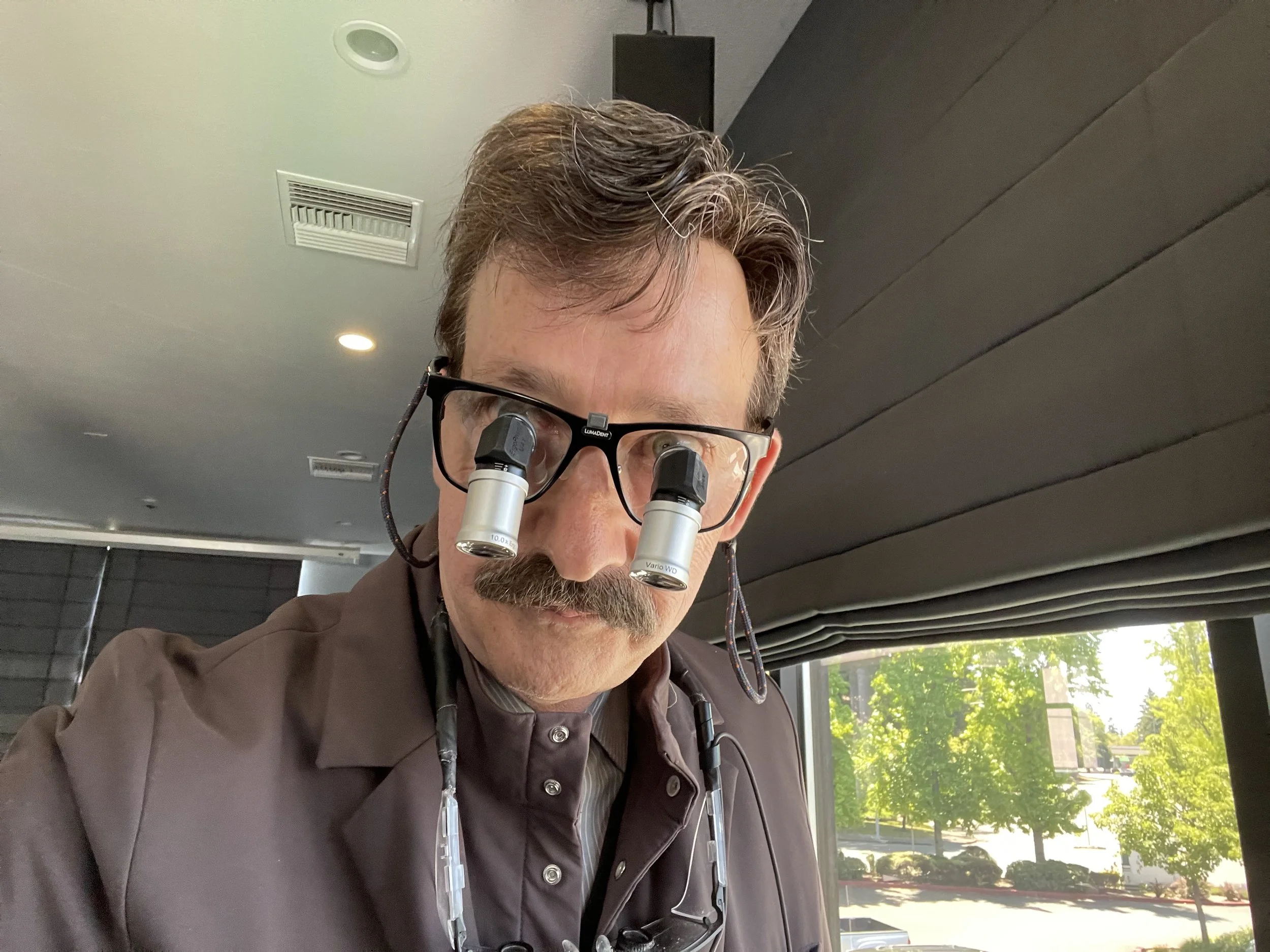Staying in the Loupe: Why It Was Time for an Upgrade
“Whether it’s for better visualization, better posture, or both, sometimes a small change can make a big difference over the course of a career.”
As dentists, our eyesight is everything. If we can’t see it, we can’t diagnose it—and we definitely can’t fix it. That’s why loupes are our best friend, especially as our careers (and, let’s be honest, our eyes) mature.
Being a CEREC user, I’m often humbled by magnification. You take your time meticulously prepping a tooth, take the scan, and give your assistant the confident “we got it” look—the kind that says the suction can finally take a break.
Then it appears on the screen: a crisp, full-color crown prep. Everything looks clean at first glance, but just to be sure, you zoom in. And that’s when reality hits. What looked perfect in the mouth now shows every little bur stroke. And sure enough, a few more refinements are needed.
It’s moments like that—small but revealing—that keep me thinking about ways to improve. My vision is still good, but I started wondering what a magnification upgrade might do. My hygienist had recently switched to a new set of loupes and was raving about the difference. For her, the main motivation wasn’t vision—it was ergonomics. After years of tilting her neck forward, even slightly, it had taken a toll.
She went with a pair of loupes that featured a much steeper declination angle, allowing her to keep her head and spine in better alignment. Once she tried them, there was no going back. She did warn me, though—it takes a solid month to adjust.
Fast forward to the last ACCD conference, where I finally tried a pair myself. I could instantly see the appeal. Standing upright, head straight, I felt how much strain this setup could take off my neck. It wasn’t just about comfort—it was about longevity.
Of course, anything new requires an adjustment period. Everyone adapts a little differently. I decided to ease into it by using the new loupes during restorative finishing work outside the mouth, which helped me get used to the optics. I went with 10x magnification, which definitely changed the game in terms of depth perception.
Now, about three weeks in, I’m hitting my stride. I still keep my trusty old loupes nearby—some habits die hard—but I’m glad I made the move. Whether it’s for better visualization, better posture, or both, sometimes a small change can make a big difference over the course of a career.

